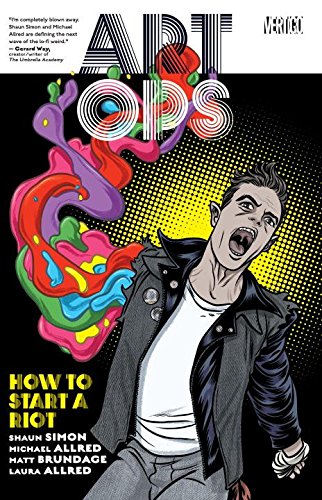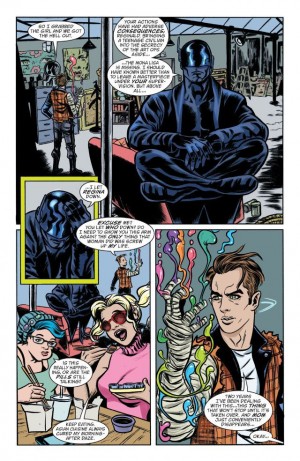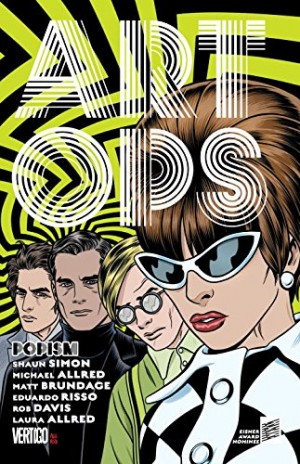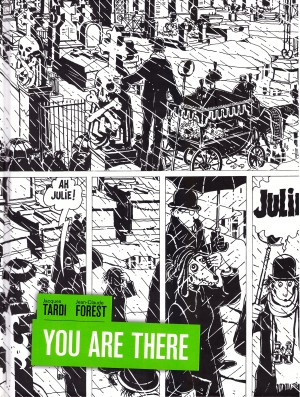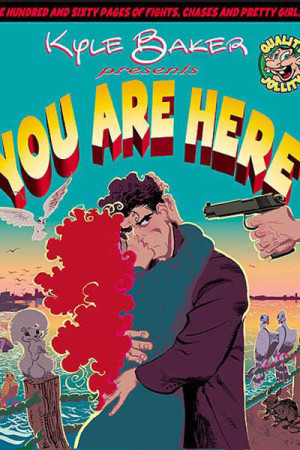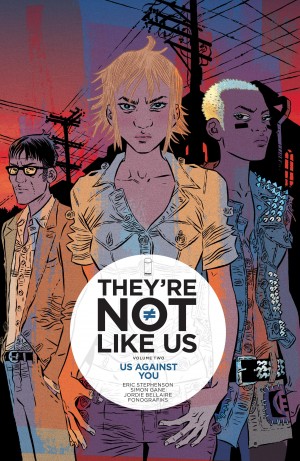Review by Karl Verhoven
Teenager Reggie Riot loses his arm in a bizarre and supernatural accident. Instead of taking him to hospital, his secretive and frequently absent mother arranges for a covert organisation to replace his arm, and now unless it’s tightly bound it’s the wild splashes of colour seen on the cover. His mother’s organisation is Art Ops, who protect the characters depicted in paintings from theft and abuse, their mission well funded and unknown to the public. When every Art Op bar one simultaneously disappears it’s down to Reggie and a floating entity in black known as the Body, to investigate and to keep the Mona Lisa safe. Reggie’s a reluctant participant, eventually convinced only because with his mother’s disappearance the substance she supplies to keep him stable is also unavailable.
The key line is “art has whatever powers it was painted as in the real world”, and this applies equally to other artistic forms, so the Body was released from a comic as protector for the Art Ops. This type of playful conceptual attitude renders Art Ops rife with possibilities, and an art-themed plot has to look good, so it’s easy to see why Michael Allred signed up. It fits his pop-art sensibilities and page after page of visual delight characterises the book, but there’s some sleight of hand afoot. Allred designed the cast, but the pencils are the work of Matt Brundage. He’s working in Allred’s style, while Allred inking the pages and Laura Allred colouring provides such a close duplication of Allred’s own approach only an expert could tell the difference. It’s a visual metaphor for some story themes. Credit also to Rob Davis, who lays out the final two chapters.
Art Ops looks so good it’s disappointing that it comes nowhere near matching the idea. The primary theme is artistic freedom, and that extends to the occupants of the paintings now wandering in reality. That’s the good part. The bad is a discursive plot with unnecessary characters, and Reggie, a tiresome, whining reprobate with an excuse for everything. His arm provides a great visual effect, but beyond that, until a redemptive final chapter his story purpose is minimal despite the amount of pages he occupies. Furthermore, while Shaun Simon has a visual imagination, his plotting fails to match it. Art Ops is obvious at every turn, and owes more than a little debt to Grant Morrison’s 1990s work on Doom Patrol, which explored similar surreal ideas with regard to paintings, although this is far better drawn. Without irony, there’s an advert for Morrison’s work at the back of the book.
There’s an ambiguity about Art Ops the organisation, who look cool, but spout arrant nonsense like “Art, like society, needs rules and regulations”. More to the point is “Art is alive and demands to be noticed” as claimed by one of the villains. Art Ops certainly grabs the attention, but then fritters it away. It’s okay, but could have been so much more. Look, but don’t read is the advice. The series concludes with Popism.
